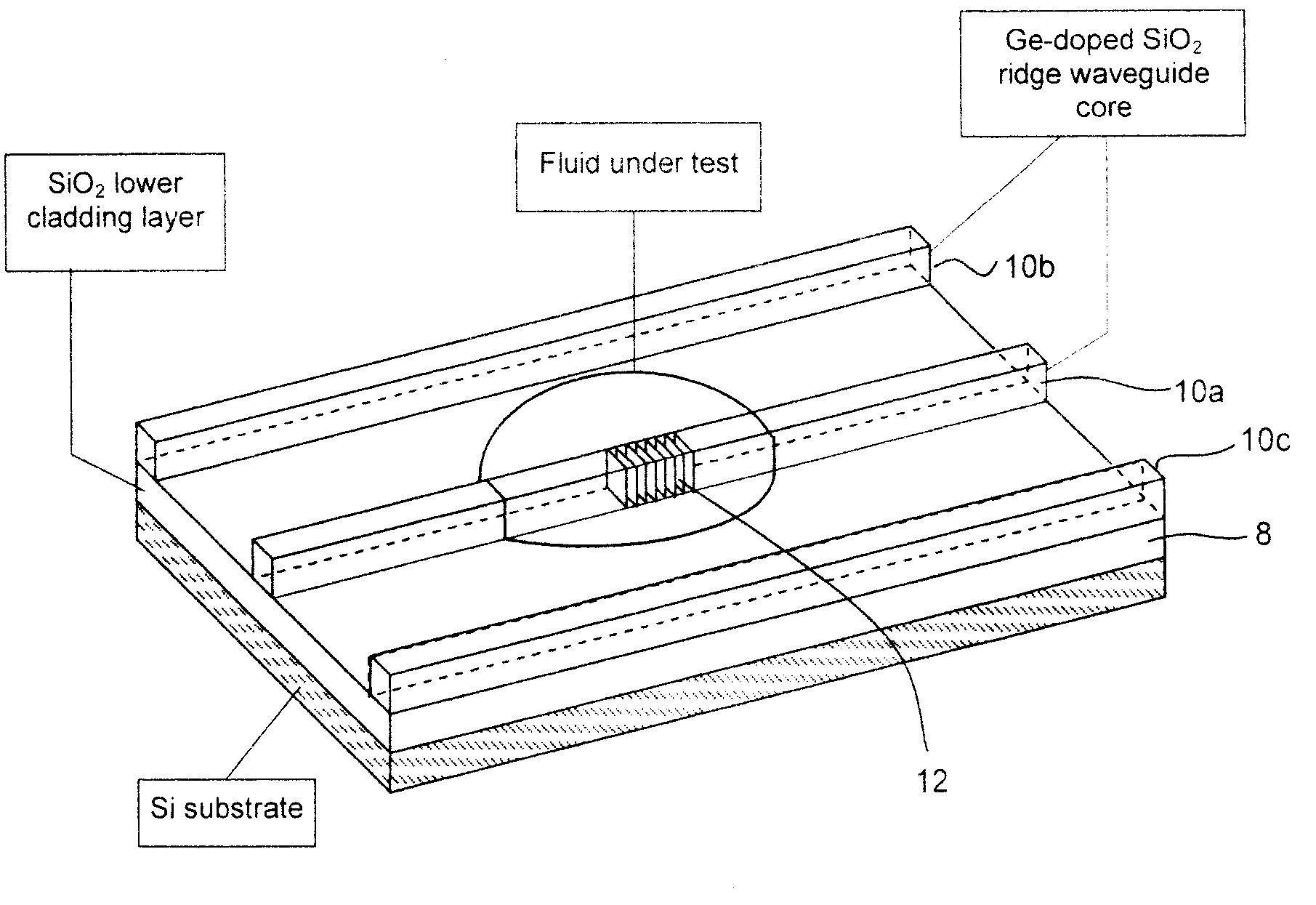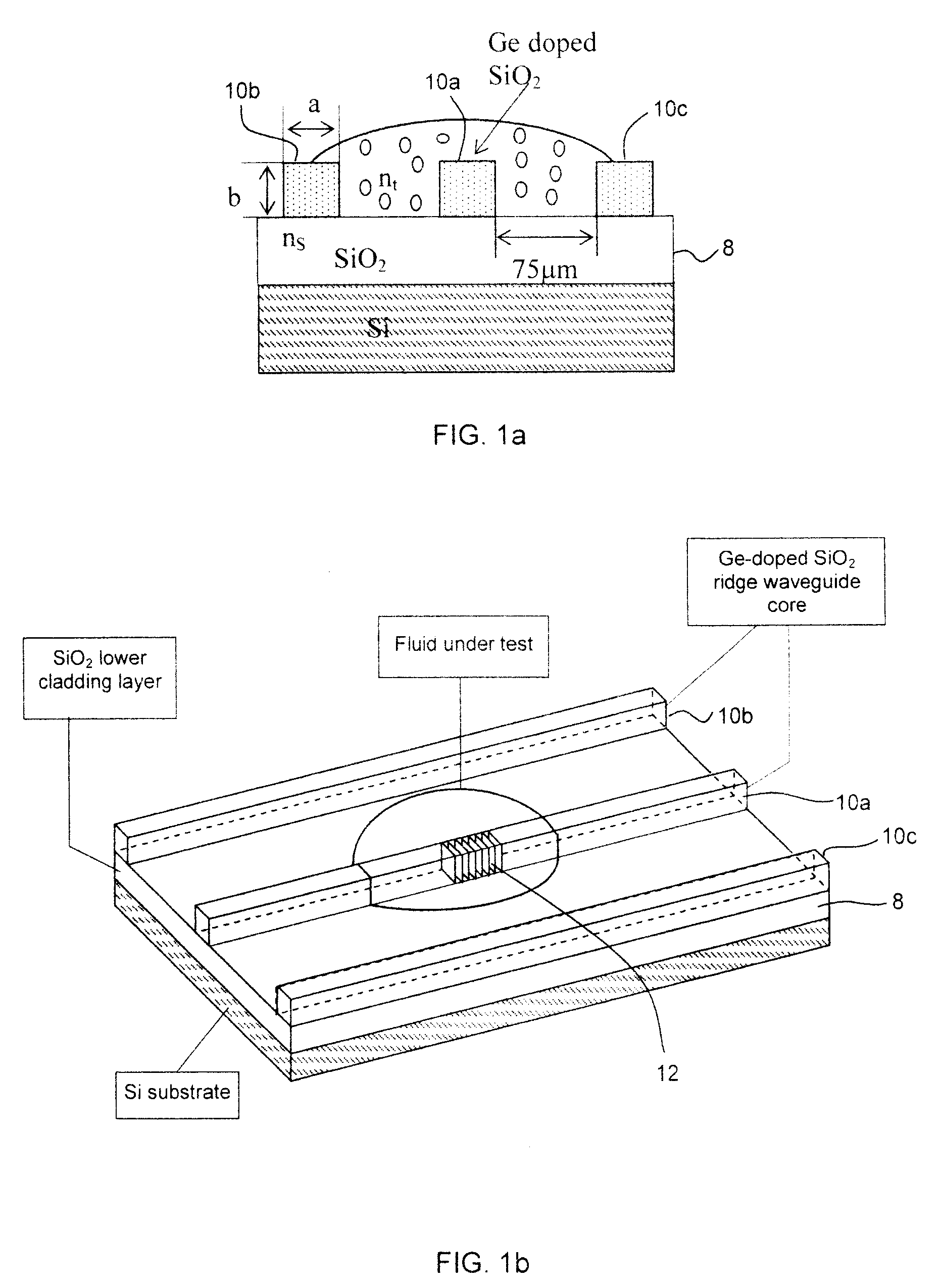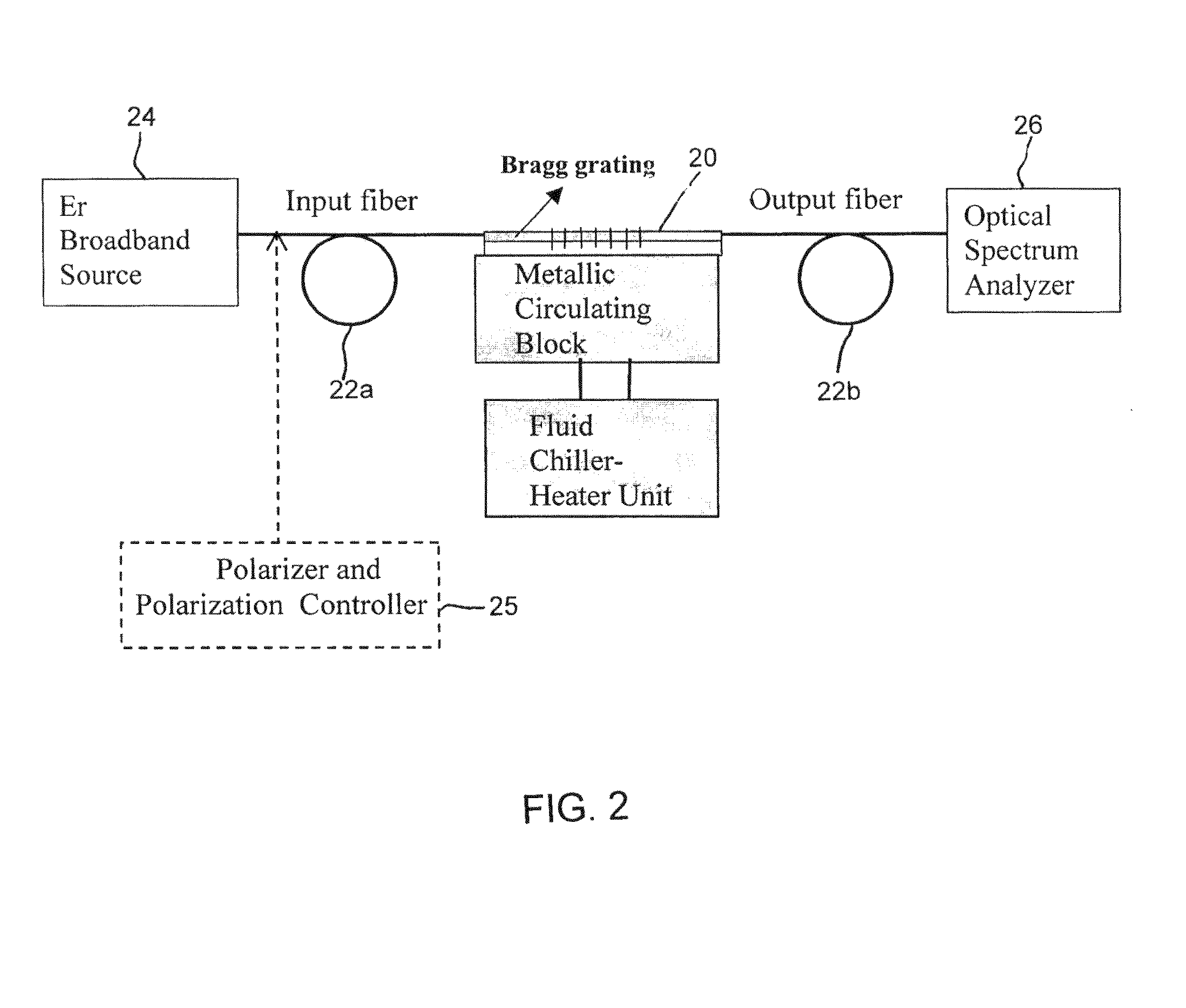Ridge waveguide optical sensor incorporating a Bragg grating
a bragg grating and optical sensor technology, applied in the field of bragg grating sensor, can solve the problems of affecting the spatial accuracy of the temperature measurement and the mechanical strength of the device, the inability to accurately measure the temperature, and the inability to adjust the sensitivity of the sensor,
- Summary
- Abstract
- Description
- Claims
- Application Information
AI Technical Summary
Benefits of technology
Problems solved by technology
Method used
Image
Examples
Embodiment Construction
[0030]Referring now to FIG. 1a an open-top rib or ridge waveguide is as shown. FIG. 1b shows a cross section of the structure shown in FIG. 1a. More particularly a center ridge waveguide 10a absent a top cladding layer contains a photo-induced Bragg grating 12 supported by a cladding layer 8 which is tested as a refractometer by coupling a light source into the end of the waveguide. Two adjacent waveguides 10b and 10c also supported by the cladding layer 8 are optionally provided to act as a barrier and to partially prevent the liquid from flowing away from the waveguide 10a containing the grating. The adjacent waveguides 10b and 10c do not contribute to the device performance. The guided light provided to the center waveguide 10a couples evanescently into the surrounding liquid through the top and sides of the waveguide. The three waveguides shown in FIGS. 1a and 1b have the same width versus height dimension a×b and are separated by 75 μm. Three different sets of waveguide dimensi...
PUM
 Login to View More
Login to View More Abstract
Description
Claims
Application Information
 Login to View More
Login to View More - R&D
- Intellectual Property
- Life Sciences
- Materials
- Tech Scout
- Unparalleled Data Quality
- Higher Quality Content
- 60% Fewer Hallucinations
Browse by: Latest US Patents, China's latest patents, Technical Efficacy Thesaurus, Application Domain, Technology Topic, Popular Technical Reports.
© 2025 PatSnap. All rights reserved.Legal|Privacy policy|Modern Slavery Act Transparency Statement|Sitemap|About US| Contact US: help@patsnap.com



